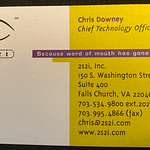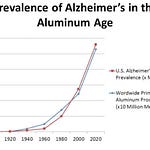How big Pharma perverts gifting for evil ends
Industry Seduces Doctors, a chapter from Butchered by “Healthcare” (this is a download link).
Physicians, medical schools, and professional organizations have no… excuse, since their only fiduciary responsibility is to patients. [Their] mission… is not to enter into lucrative commercial alliances with the pharmaceutical industry. As reprehensible as many industry practices are, I believe the behavior of much of the medical profession is even more culpable.
Marcia Angell, former editor-in-chief, New England Journal of Medicine (NEJM).
How could physicians have allowed this to happen? No doctor I know started with the idea of money above patients. We all wrote that essay in school about how we wanted to save the world. But we are now pawns of moneyed interests and often betray our patients’ trust.
Physician training is brutal, and our expectations are high. Most of us have little income through our mid-30s, and we often take out huge loans. We may be responsible for spouses and children. Everyone around us seems to be squeezing a fortune from healthcare: older surgeons, radiologists, hospital administrators, and even the lawyers suing us. We want to claw our way up the pay scale.
The best marketers on the planet spend billions of dollars trying to get us to channel whatever resources we control toward their companies. We know this, yet we still connect with our patients, inspire their trust, and try to do our best. They depend on us, especially the sick ones, which makes us responsible for all consequences.
I am by turns reverential and contemptuous of my peers. Some are true mensches. This Yiddish word means they are honorable, modest, and outstanding mentors. These real physicians are with us still, and you will hear their angry and sorrowful voices here. Others sacrifice their patients’ health to make more money.
Most of us are somewhere in between. We are trying to make a living in a system where the industry has rendered the science murky. Most of our misdeeds are unintentional, and few admit to ourselves that we ever take advantage of patients. We are blind to our faults, but it is a moot point for the patient on the receiving end.
Doctors imagine their scientific training and professionalism allow them to walk through this jungle without bias. But we are profoundly vulnerable, the more so because we believe little can sway us. Nothing excuses us for ignoring patients’ best interests—not fatigue, confusion, ignorance, or even cowardice.
Salespeople begin our seduction in medical school, where they supply free food. Gangs of them later invade our offices. The corporations teach them the “three Fs of sales:” food, flattery, and friendship. Relationships are everything; the sales reps occasionally even use the fourth F. The target rarely understands what is happening, and the profits from blowing up prescribing are enormously larger than corporate marketing expenses.
Gifting has a considerable effect. Accepting a single pharmaceutical industry-sponsored meal produced higher rates of prescribing. The more expensive meals had bigger effects. Doctors who accept money prescribe brand-name medications twice as often. Recipients of industry funds write more costly prescriptions. A JAMA review (2000) entitled “Is A Gift Ever Just a Gift?” looked at 538 studies about lectures and gratuities sponsored by drug companies. Gifts transformed physician behavior. How could they not?
An analysis at Worstpills.org, published by the Ralph Nader group Public Citizen, concluded that this situation produces staggering overprescribing. In 2018, US patients filled 4.19 billion prescriptions, over 13 per person. Since many of us take no medications, the rest are consuming a freakish quantity.
How can presents have such a profound effect on professionals? The answer lies in “influence theory,” a foundational field of psychology that corporate marketers have weaponized to boost sales. Any time we give a gift or favor, substantial leverage occurs. This is “reciprocity.” It seems obvious, but we are easily fooled.
People who help you have the favor returned. Turning down gifts is antisocial, and we think of those who do not give back as “moochers.” Larger presents make a bigger difference, but small ones can also be powerful.
Reciprocity is likely a fundamental evolutionary survival trait. Giving and receiving meals with strangers locks in relationships. In the past, this allowed a tribe or person to support others during hard times when starvation loomed. From sandwiches for office staff to lavish dinners for doctors, food is one of the most potent weapons in the corporate drive to increase drug and device sales.
Outside medicine, business people recognize reciprocity. They scramble to gain an advantage by delivering favors, even as minor a consideration as holding a door. The impulse to return gifts is reflexive and powerful. This is unlike negotiated exchanges.
Restaurants that give free food samples can make purchases seem irresistible. Drug companies provide samples of expensive drugs to doctors, who then gift them to patients. The process bonds everyone to eventual purchase—which is often painless because insurance pays.
At one time, Hare Krishna’s followers were handing out flowers at many US airports. This worthless gift often triggered an automatic contribution. The beggars would pocket the money, and the travelers would throw the flowers away. The Krishnas would then pick them out of the wastebaskets and reuse them. Another example is that restaurant tips significantly increase when the waiter leaves candy with the check.
After reading about influence studies, I understood why drug companies give away all that plastic junk. Besides reminding us of brand names, free pens, and coffee cups start reciprocal relationships. Later, dinners, trips, and even substantial research grants may be available. A few prescriptions of stratospherically priced drugs will pay for nearly anything. Congress recognized how potent this is and banned large presents for physicians—yet loopholes still abound.
Industry representatives overwhelm busy doctors with these influence techniques. Reciprocity or returning favors is only one type. Others include:
✪ Authority (if the physician leaders do it, it must be right)
✪ Liking and identification (what a nice drug rep; he plays golf just like me)
✪ Social proof (my competitors are doing it)
✪ Scarcity (the product is nearly gone; buy or prescribe it now)
Dr. Robert Cialdini’s Influence (1984) is the best reference for this process. Generations of business people have regarded it as a sales bible.
We idolize celebrities, giving them credit for almost anything, even sound judgment. The companies flood TV, movies, and the Internet with their endorsements. These combine authority, liking, and social proof. For example, Bob Dole helped create a new category of disease, erectile dysfunction. In 2002, Kathleen Turner discussed rheumatoid arthritis on Good Morning America and directed listeners to a website. She did not disclose that she was working for Wyeth, the manufacturer of the rheumatoid drug Enbrel. Cases like this have been in the news for over a decade.
Ninety-four percent of US physicians accept drug and medical device companies’ gifts. Most of us only receive a few dollars yearly for an occasional sponsored lunch at medical meetings. But twelve percent of US physicians get paid for research—or sham research—and the money is substantial. According to ProPublica, the total industry gifts to physicians were over $2 billion annually in 2018, including gifts, meals, speaking, travel, and consulting. They did not count research grants, but openpaymentsdata.cms.gov did. This website said the total was $9.35 billion for 2018 alone. You can look up how much each doctor received on either website.
There is now one pharmaceutical sales representative for every five doctors in the US. They call the big prescribers who like and use their drugs “whales.” Companies often pay them to lecture about products at meetings. Hawking physician credibility like this has built many a summer home.
Jerome Kassirer, former editor of the NEJM, described all the payoffs in On the Take (2004). Some consultant physicians get free trips to Florida, some get $1000 for attending one-day meetings, and some get paid for allowing their names on ghostwritten articles.
Psychiatrists receive more money from corporations than any other US specialty, and many hide the payments. Lisa Cosgrove studied the highly influential psychiatric diagnostic “bible,” the Diagnostic and Statistical Manual of Mental Disorders (DSM IV and V). She reported that three-quarters of the authors had financial ties to corporations.
Pharmaceutical companies know which of us is prescribing each medication. Here is how they find out. Although pharmacies usually refuse to sell the names of doctors who prescribe, they will sell their Drug Enforcement Agency (DEA) numbers. The American Medical Association (AMA) then sells the doctor’s name, which matches each number, back to the corporations. The companies find out precisely how much medication each physician prescribes. This allows them to pressure doctors to sell more and target those who are small prescribers or who do not use their products at all. Including this, the AMA made more than $56 million from database sales in 2018.
I know a family physician who gets a free dinner nearly every week. He recently had his housewarming party catered by a drug company. Specialists usually control more sales, and they often get the most. Everyone thinks this is harmless, but it is not.
Other industries criminalize this kind of behavior. For example, the Securities and Exchange Commission has clear rules about disclosure when raising money for investments. An investor needs to know conflicts that could affect returns, just as a patient should know if a corporation has paid the doctor to prescribe. Law, business, and governmental groups forbid outside relationships that produce financial gain, professional advancement, or family advantage. Ethical conflicts like these may provoke a lawsuit or criminal prosecution.
Lawyers can be disbarred for concealing conflicts of interest (COIs). Judges recuse themselves or are recused by their supervisors from involvement where they have personal or monetary relationships. Federal judicial and executive branch bureaucrats must sell their ownership in companies or industries they might affect. The federal government prohibits its employees from accepting anything with a value of over $20. Reporters “may not take any payment, gift, service, or benefit… offered by a news source…[in order to] maintain accuracy, balance, and the truth.”
Physicians’ organizations are also being bought. The medical industry gives them trinkets, research grants, outright grants (sometimes in the millions), speaker's fees, and substantial exhibitor fees for their meetings. Free ghostwriting is part of it. All this ensures favorable guidelines, prescribing, and publications. One reviewer called the conferences “unprofessional conduct” and wrote that the impact of the system was overwhelming.
Nearly all the societies’ websites state that they are “funded by an unrestricted grant from company X.” However, each physician group has policy statements that say they have no commercial bias. Their physician leaders vehemently proclaim objectivity with editorials in the journals.
For example, the Endocrine Society says in its Code of Ethics: “The Society actively seeks outside financial or in-kind support… from pharmaceutical, device, or biotech companies… [and they] maintain complete independence between industry support of any and all of its programs… [and] objectivity and credibility are not compromised in any way.” However, for their “Endo2015” national meeting, they advertised the industry perks, from “therapy dogs” to raffles, prizes, and local jazz artists. Posters on their website proudly stated (caps in the original):
WITH MORE THAN 5800 ATTENDEES, ENDO DELIVERED ON ITS PROMISE TO PUT YOUR COMPANY AND BRAND IN FRONT OF THE LEADERS IN ENDOCRINE PRACTICE
They have over a dozen corporate sponsors. Their “Statement on Industry Relationships” implausibly reminds us: “Sources of commercial support do not influence the scientific, educational or public policy decisions of the Society.”
Companies now spend at least twenty percent of their vast marketing budgets on the physicians who have the most influence. They call them the “key opinion leaders,” using the acronym KOL. Since routine gifts to physicians have been progressively restricted by federal law, the companies focus on things like study funding, which has few rules. This research money induces top doctors to corrupt science, produce favorable conclusions, and advocate for products.
Many of these physicians conceal the sources of their money. For example, the dean of Yale’s medical school, the director of a cancer center in Texas, and the incoming president of the most prominent society of cancer doctors all published articles in medical journals without disclosing financial ties to pharmaceutical and healthcare companies (New York Times, 2018). José Baselga, MD, chief medical officer at Sloan Kettering Cancer Center, took millions from industry, published frequently, but mostly kept the payments secret. When this came out, he resigned (NYT/ProPublica, 2018).
Industry pays the KOLs to write favorable guidelines for physician practice. Hundreds of these statements now command doctors to perform in ways that jack up drug sales. Four of five authors of these “standards” have financial relationships with corporations, with an average of ten conflicts of interest (COIs) per contributor. One study looked at 431 guidelines. Eighty-eight percent had no disclaimers and did not even reference the relevant literature. A JAMA review of 279 guidelines produced by 69 authors concluded their methodological quality was atrocious. Unfortunately, these “standards of care” have the weight of expert testimony in court.
Gilbert Welch told how the corporations made it happen in Overdiagnosed, Making People Sick in the Pursuit of Health (2011):
The head of the diabetes cutoff panel [which established standards] was a paid consultant to Aventis Pharmaceuticals, Bristol-Myers Squibb, Eli Lilly, GlaxoSmithKline, Novartis, Merck, and Pfizer—all of which made diabetes drugs. Nine of the eleven authors of recent high blood pressure guidelines had some kind of financial ties… [to the medication manufacturers]. Similarly, eight of the nine experts who lowered the cholesterol cutoff were paid consultants of the drug companies making cholesterol drugs. And the first osteoporosis standard was established by… a panel… whose corporate advisory board consisted of thirty-one drug and medical equipment companies.
The industry has even infiltrated medical schools, home to some of the most influential physicians. Eric G. Campbell, Ph.D., studied 459 department chairs of US medical schools. Two-thirds of them and two-thirds of their departments had close ties to industry. An overwhelming majority of these chief doctors believed they had no biases related to this.
In another study, he discovered that a third of the Institutional Review Board members who approve studies had corporate COIs. Thirty-five percent had conflicts regarding issues they voted on during the past year. Federal guidelines require recusal in these situations, but they are ignored.
Disclosure is used to launder conflicts of interest, but it gets nothing clean. Elsevier, the largest medical publication house, requires its authors to confess their payments in writing. But this does not disinfect payoffs. No matter how strong an argument is, a balanced view is impossible for them. Sponsors punish actions contrary to their interests by cutting off their consultants’ money.
Joseph Biederman, MD, has one disclosure statement of 364 words, an article in itself. He was censured for failing to disclose some of his many sources of corporate pay, and the NY Times asked whether he was an “expert or shill.” He is Chief of Clinical and Research Programs in Pediatric Psychopharmacology and Adult ADHD at the prestigious Massachusetts General Hospital.
Everyone respects doctors, particularly those with fancy degrees and university affiliations. Credibility based on credentials seems dependable. Unfortunately, influence works on them the same way it does on the rank-and-file. After money changes hands, the recipient’s recommendations about drugs, treatments, and surgery are biased. Pretensions of objectivity citing authority are much worse than nothing because they fool us. Patients and doctors alike are blind to this.
Neither physicians nor patients are tough-minded enough to believe that powerful effects—essentially bribery—now command nearly every move in healthcare. In theory, doctors and other caregivers put patients before finances, but corporations are designed as money-making machines. For them, patient outcomes are a distant consideration.
Update on our gifts from the chlorine dioxide (CD) affiliate program
Review: Chlorine dioxide is revolutionary—a lightsaber you can use against Rockefeller medicine’s Lyme disease, vaccine-induced autism, and many other evils. Read more about this in the last chapter of Judas Dentistry HERE, or my post HERE.
Frontier Pharm is a commercial supplier of CD products. These are “gateway drugs” for the real goal—getting people to make their own. I currently use Frontier’s mouthwash, toothpaste, and Nail-it toenail fungus killer. I also use Snoot! Spray twice a day. It is the best way to get chlorine dioxide into my brain and bloodstream in consistent concentrations (click the image to buy some).
Many of my readers and I signed up for the Frontier and Snoot! affiliate sales programs. These generate referrals like multi-level marketing (MLM). We earn a commission when people purchase products from our links, and they get a five percent discount.
Chlorine dioxide is not another humdrum or nearly useless household product—it works phenomenally well and is virtually unknown. Unlike MLMs, Frontier Pharm and Snoot! require no purchase, minimum order, or “starter package” to join their affiliate programs.
As of last week, my Substack fans’ purchases have put $3050.72 into my bank account. I am grateful for chlorine dioxide and am donating my share to others. To start, I decided to give $500 to each of the following:
Andrew Brigden, for his stalwart work including HERE
Sasha Latypova, the best commentator on Substack
Matthew Crawford’s work writing about “chaos agents”
CJ Hopkins, to help with his litigation forever-war
www.formerfedsgroup.org – supporting and suing pharma and government for FDA protocol deaths and COVID vaxx injuries. They are Frontier and Snoot!’s biggest supporters.
Kerri Rivera is a brave warrior who needs some extra love and help.
Here is how to play our game and make money. If you decide to pass along your good fortune, karma may smile.
My affiliate link HERE takes you to the Frontier website to buy their mouthwash and other products.
THIS ONE is for the Snoot! Spray nasal products.
If you want to help spread the word and make money, join the Frontier affiliate program HERE.
Snoot!’s is HERE.
After you fill out the application forms to become an affiliate, you will be sent a link to your dashboard in less than a day. There, you will find special website access links to send to your friends or use in your written announcements. These will give you credit (and commissions) for their orders, and your customers will get the introductory discount. You can also make a personal code to use when you podcast or do other speaking.
Becky Dutton’s charity work has lost money every month for years
Ms. Dutton has spent 16 years working with people damaged by metals and leads support and counseling groups. The average patient in Becky's practice has 12 to 16 amalgams. She makes no money from her efforts and lives in Stratford-upon-Avon, UK.
Mark Kennard wrote: “She’s one of the most knowledgeable and experienced people on the planet about mercury and diagnosing and managing type 4 metal allergy.” Learn more about her by downloading Judas Dentistry HERE.
Mark Kennard shows gratitude with small gifts:
Between the ages of 14 and 51, doctors nearly killed me several times, and I eventually became disabled.
I live in New Zealand, where healthcare is ineffective and corrupt. Patients are routinely gaslighted and bullied by their physicians. Outsiders find our problems difficult to believe, but they are a microcosm of what is happening elsewhere. The only way out for patients is to aggressively take charge of their care.
My most severe problems began in 2005 when surgeons placed a titanium alloy implant in my lower back. Many studies prove that lower back surgical fixation is a near-universal failure. Worse, my body soon told me that I was profoundly allergic to the metals used. I was never tested for nor even asked about them before the procedure. I eventually had several operations to remove the metals, so my condition improved.
These adversities molded my character, intellect, and ability to persist. I only survived through my wits and the support of my family. You can read more about me in my Substack and Dr. Yoho’s chapter about me in Judas Dentistry.
Implanted metals, including surgical clips, dental amalgams, and many orthopedic metals cause a considerable proportion of our health and social problems. They are toxic and create electrical currents that accelerate metal shedding. They commonly create allergies, infections, and direct toxicities. Amalgam fillings affect some people’s personalities and temperaments and are a cause of mental illness and crime.
If a dentist who uses the proper procedures can be found, replacing dental work with metal-free ceramics often transforms health and attitude.
My pain is now slowly lifting, and I am starting to function better. As this happens, I am turning my energies outward and considering how to give back. I devised small charities for those struggling to pay for their metal removal. I hope they will join my effort after they improve.
I started having these ideas when my renter, Steven, could not afford to get his fillings replaced with metal-free ceramics. I offered to pay half, inspiring him to set aside $300 monthly to help others with this process.
I am also helping a local girl get her teeth fixed. During her mastectomy, they put a metal marker in her, and when she had chemo, she became sensitized to the metals in her mouth. Her amalgams and standard composites must be replaced with metal-free ceramics to fix her severe allergies. After this, she is going to try to find a surgeon who will remove her markers and staples.
Millions of New Zealanders need amalgams replaced. Some are hypersensitive, and others have chronic mercury toxicity. Giving to strangers lifts them a few notches and can make them better people. I hope our gifts will encourage people to copy our actions.
Our time left to do good work is short
One man, after burying another, has been laid out dead, and another buries him, and all this in a short time. Hippocrates, after curing many diseases, fell sick and died... and lice killed Socrates... What means all this? ...All human things are smoke and nothing at all, and it is not for us but for the gods to settle whether we play the play out or only a part of it. Pass then through this little space of time conformably to nature and tend thy journey in content, just as the olive falls off when it is ripe, thanking nature that produced it and the tree on which it grew. Do not act as if you were going to live 10,000 years. While you live, while you are able, be good. —Marcus Aurelius













Share this post